Algorithm Design and Convergence Analysis for Coexistence of Cognitive Radio Networks in Unlicensed Spectrum
Abstract
:1. Introduction
- A universal convergence analysis framework is developed for the unlicensed spectrum allocation algorithm. Specifically, the algorithm iteration evolutions are modeled by a system of stochastic differential equations as a virtual dynamic system. We further reveal that the stability of the dynamic system is equivalent to the convergence of the algorithm iteration.
- A one-timescale iteration-adjustable unlicensed spectrum allocation algorithm is developed, where the step size and timescale parameter can be jointly adjusted based on the system performance requirement and signal overhead consideration. After that, we obtain the sufficient condition for the convergence of the one-timescale iteration-adjustable algorithm and the upper bound of the convergence error.
- We further propose a two-timescale iteration-adjustable joint frequency selection and frequency allocation algorithm, where the frequency selection iteration timescale is set according to the slow-changing statistical channel state information (CSI), whereas the frequency allocation iteration timescale is set according to the fast-changing local CSI. Then, we derive the convergence condition of the two-timescale algorithm and the upper bound of the corresponding convergence error under mixed timescale network states.
2. Related Work
3. System Model
4. Spectrum Allocation Iteration Algorithm
4.1. Spectrum Allocation Iteration Algorithm
4.2. Convergence Analysis
4.3. Signaling Overhead
5. One-Timescale Dynamic Spectrum Allocation
5.1. One-Timescale Algorithm
5.2. Convergence Analysis
5.3. Signaling Overhead
6. Two-Timescale Dynamic Spectrum Allocation
6.1. Two-Timescale Algorithm Dynamics
6.2. Convergence Analysis
- The convergence of the small timescale variables and large timescale variables are coupled with each other. The term is the premise condition for the convergence of two-timescale iterations. Recall that and are the adjustment parameters of the two-timescale iterations. Then, for the given certain spectrum allocation algorithm (,,,), the small timescale variables should be iterated much faster than the large timescale variables in order to achieve the convergence.
- By adjusting and , the stability of the algorithm can be improved. However, when is too small, the algorithm must iterate more times per unit of time, resulting in more iteration overhead. Excessive can also cause significant steady-state error [22].
- For the convergence error, is determined by the large timescale algorithm adjustment parameters and the global CSI parameter . However, the convergence error of the small timescale algorithm is affected not only by the small timescale parameters , , a and but also by the large timescale parameters , and .
- For the static CSI, where the CSI parameters , we have . Under static , where , we obtain that and that is the same as Theorem 2. Hence, the overall convergence error only comes from the small timescale iterations.
- Under time-varying and , one can increase the step size and decrease the timescale adjustment parameter and to reduce the convergence error at the price of larger steady-state error , larger signaling overhead and computational complexity.
6.3. Signaling Overhead
7. Simulation Results
8. Conclusions
Author Contributions
Funding
Institutional Review Board Statement
Informed Consent Statement
Data Availability Statement
Conflicts of Interest
Appendix A
Appendix B
References
- Zhang, H.; Leng, S.; Wei, Y.; He, J. A Blockchain Enhanced Coexistence of Heterogeneous Networks on Unlicensed Spectrum. IEEE Trans. Veh. Technol. 2022, 71, 7613–7624. [Google Scholar] [CrossRef]
- Bhangale, K.; Mapari, R.; Randive, S.; Mapari, K. Cross Technology Communication between LTE-U and WiFi to Improve Overall QoS of 5G System. In Proceedings of the 2022 2nd Asian Conference on Innovation in Technology (ASIANCON), Ravet, India, 26–28 August 2022; pp. 1–6. [Google Scholar] [CrossRef]
- Gopal, K.P.; Sambath, M.; Geetha, A.; Shekhar, H. Implementing Fast Router in Convergent LTE/Wifi Networks Using Software Defined Networks. In Proceedings of the 2022 IEEE 2nd Mysore Sub Section International Conference (MysuruCon), Mysuru, India, 16–17 October 2022; pp. 1–5. [Google Scholar] [CrossRef]
- Challita, U.; Dong, L.; Saad, W. Proactive Resource Management for LTE in Unlicensed Spectrum: A Deep Learning Perspective. IEEE Trans. Wirel. Commun. 2018, 17, 4674–4689. [Google Scholar] [CrossRef]
- Tan, J.; Xiao, S.; Han, S.; Liang, Y.C.; Leung, V.C.M. QoS-Aware User Association and Resource Allocation in LAA-LTE/WiFi Coexistence Systems. IEEE Trans. Wirel. Commun. 2019, 18, 2415–2430. [Google Scholar] [CrossRef]
- Pei, E.; Zhu, B.; Li, Y. A Q-learning based Resource Allocation Algorithm for D2D-Unlicensed communications. In Proceedings of the 2021 IEEE 93rd Vehicular Technology Conference (VTC2021-Spring), Helsinki, Finland, 25–28 April 2021; pp. 1–6. [Google Scholar] [CrossRef]
- Saha, G.; Abouzeid, A.A. Optimal Spectrum Partitioning and Licensing in Tiered Access under Stochastic Market Models. IEEE/ACM Trans. Netw. 2021, 29, 1948–1961. [Google Scholar] [CrossRef]
- Girmay, G.G.; Pham, Q.V.; Hwang, W.J. Joint channel and Power Allocation for Device-to-Device Communication on Licensed and Unlicensed Band. IEEE Access 2019, 7, 22196–22205. [Google Scholar] [CrossRef]
- LeAnh, T.; Tran, N.H.; Ngo, D.T.; Han, Z.; Hong, C.S. Orchestrating Resource Management in LTE-Unlicensed Systems with Backhaul Link Constraints. IEEE Trans. Wirel. Commun. 2019, 18, 1360–1375. [Google Scholar] [CrossRef]
- Huang, Y.; Chen, Y.; Hou, Y.T.; Lou, W.; Reed, J.H. Recent Advances of LTE/WiFi Coexistence in Unlicensed Spectrum. IEEE Netw. 2018, 32, 107–113. [Google Scholar] [CrossRef]
- Tuladhar, S.; Cao, L.; Viswanathan, R. Fair Coexistence of LAA and WiFi in Multi-Carrier LBT based on Joint Throughput and Airtime Fairness. In Proceedings of the 2021 IEEE International Symposium on Dynamic Spectrum Access Networks (DySPAN), Los Angeles, CA, USA, 13–15 December 2021; pp. 147–152. [Google Scholar] [CrossRef]
- Kulkarni, V.P.; Joshi, R.D. An LBT Scheme with Adaptive Freezetime for LAA Outdoor Scenario. In Proceedings of the 2022 IEEE 7th International conference for Convergence in Technology (I2CT), Pune, India, 7–9 April 2022; pp. 1–5. [Google Scholar] [CrossRef]
- Ren, Q.; Zheng, J.; Xiao, J.; Zhang, Y. Performance Analysis of an LAA and WiFi Coexistence System Using the LAA Category-4 LBT Procedure with GAP. IEEE Trans. Veh. Technol. 2021, 70, 8007–8018. [Google Scholar] [CrossRef]
- Liu, R.; Yu, G.; Qu, F.; Zhang, Z. Device-to-Device Communications in Unlicensed Spectrum: Mode Selection and Resource Allocation. IEEE Access 2016, 4, 4720–4729. [Google Scholar]
- Yuan, X.; Qin, X.; Tian, F.; Hou, Y.T.; Lou, W.; Midkiff, S.F.; Reed, J.H. Coexistence between Wi-Fi and LTE on Unlicensed Spectrum: A Human-Centric Approach. IEEE J. Sel. Areas Commun. 2017, 35, 964–977. [Google Scholar] [CrossRef]
- Li, J.; Han, Y. Multi-RAT wireless network capacity optimization under optimal spectrum splitting in LTE-U. In Proceedings of the IEEE WCNC, Doha, Qatar, 3–6 April 2016; pp. 1–6. [Google Scholar]
- Hajmohammad, S.; Elbiaze, H. Unlicensed spectrum splitting between Femtocell and WiFi. In Proceedings of the IEEE ICC, Budapest, Hungary, 9–13 June 2013; pp. 1883–1888. [Google Scholar]
- Erturk, M.C.; Aki, H.; Guvenc, I.; Arslan, H. Fair and QoS-Oriented Spectrum Splitting in Macrocell-Femtocell Networks. In Proceedings of the IEEE GLOBECOM, Miami, FL, USA, 6–10 December 2010; pp. 1–6. [Google Scholar]
- Bianchi, G. Performance analysis of the IEEE 802.11 distributed coordination function. IEEE J. Sel. Areas Commun. 2000, 18, 535–547. [Google Scholar] [CrossRef]
- Liew, S.C.; Kai, C.H.; Leung, H.C.; Wong, P. Back-of-the-Envelope Computation of Throughput Distributions in CSMA Wireless Networks. IEEE Trans. Mob. Comput. 2010, 9, 1319–1331. [Google Scholar] [CrossRef]
- Bertsekas, D.P. Nonlinear Programming; Athena Scientific: Belmont, MA, USA, 1999. [Google Scholar]
- Boyd, S.; Xiao, L.; Mutapcic, A. Subgradient methods. Lect. Notes Ee392o Stanf. Univ. Autumn Quart. 2003, 2004, 2004–2005. [Google Scholar]
- Kushner, H.J. Stochastic stability and control. In Mathematics in Science & Engineering A; Academic Press: New York, NY, USA, 1967. [Google Scholar]
- Chen, J.; Lau, V.K.N. Delay Analysis of Max-Weight Queue Algorithm for Time-varying Wireless Adhoc Networks-Control Theoretical Approach. IEEE Trans. Signal Process. 2013, 61, 99–108. [Google Scholar] [CrossRef]
- Gawlowicz, P.; Zubow, A.; Wolisz, A. Enabling Cross-technology Communication between LTE Unlicensed and WiFi. In Proceedings of the IEEE INFOCOM, Honolulu, HI, USA, 16–19 April 2018; pp. 144–152. [Google Scholar]
- Feng, T.; Field, T.R.; Haykin, S. Stochastic Differential Equation Theory Applied to Wireless Channels. IEEE Trans. Commun. 2007, 55, 1478–1483. [Google Scholar] [CrossRef]
- Mostofi, Y.; Gonzalez-Ruiz, A.; Gaffarkhah, A.; Li, D. Characterization and modeling of wireless channels for networked robotic and control systems—A comprehensive overview. In Proceedings of the IEEE/RSJ International Conference on Intelligent Robots and Systems, St. Louis, MO, USA, 10–15 October 2009; pp. 4849–4854. [Google Scholar]
- Tse, D.; Viswanath, P. Fundamentals of Wireless Communication; Cambridge University Press: Cambridge, UK, 2005. [Google Scholar]
- Rhee, I.; Shin, M.; Hong, S.; Lee, K.; Kim, S.J.; Chong, S. On the Levy-Walk Nature of Human Mobility. IEEE/ACM Trans. Netw. 2011, 19, 630–643. [Google Scholar] [CrossRef]
- Chen, J.; Lau, V.K.N. Convergence analysis of mixed timescale cross-layer stochastic optimization. In Proceedings of the Asilomar Conference on Signals, Systems and Computers, Pacific Grove, CA, USA, 3–6 November 2013; pp. 225–229. [Google Scholar]
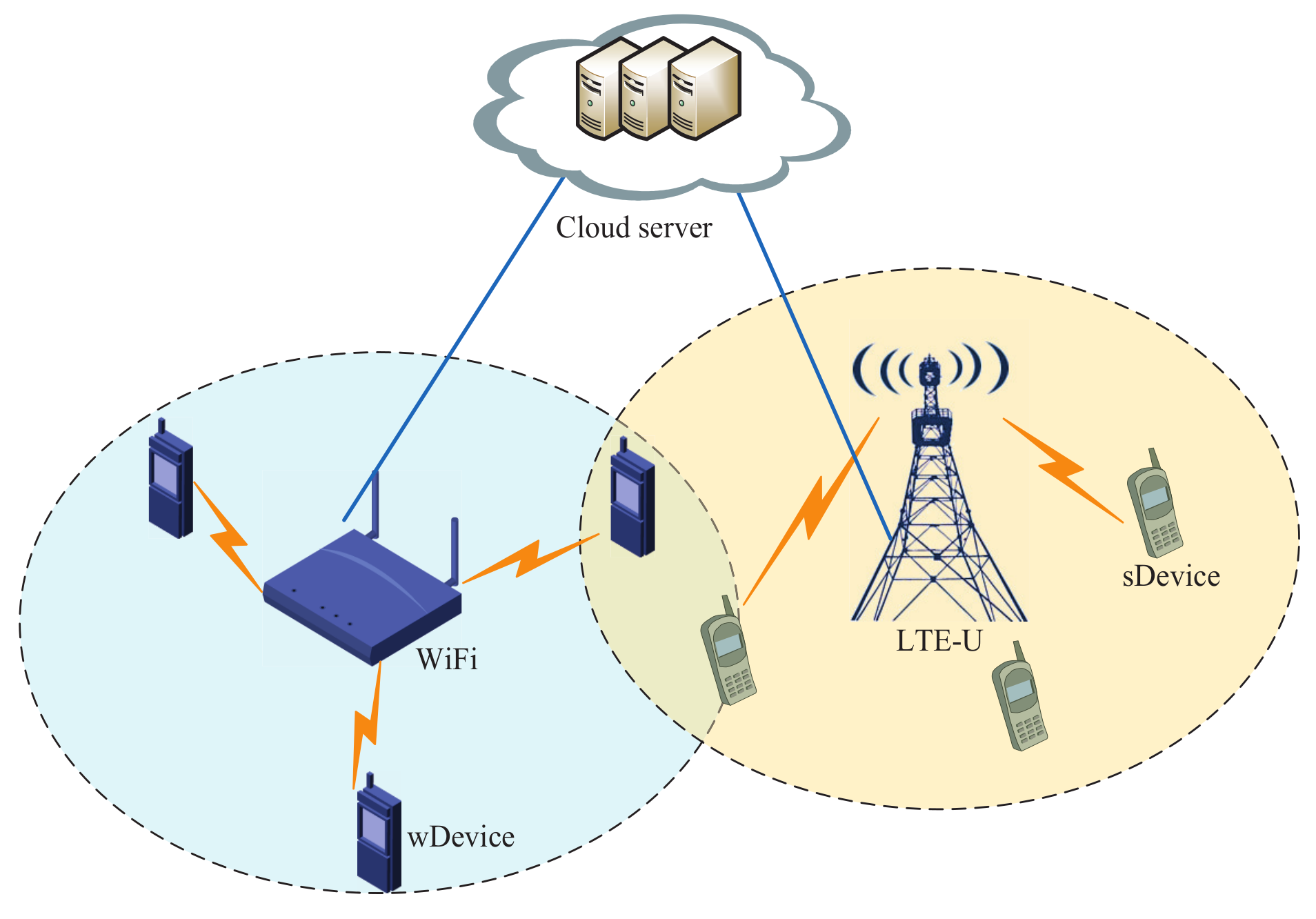
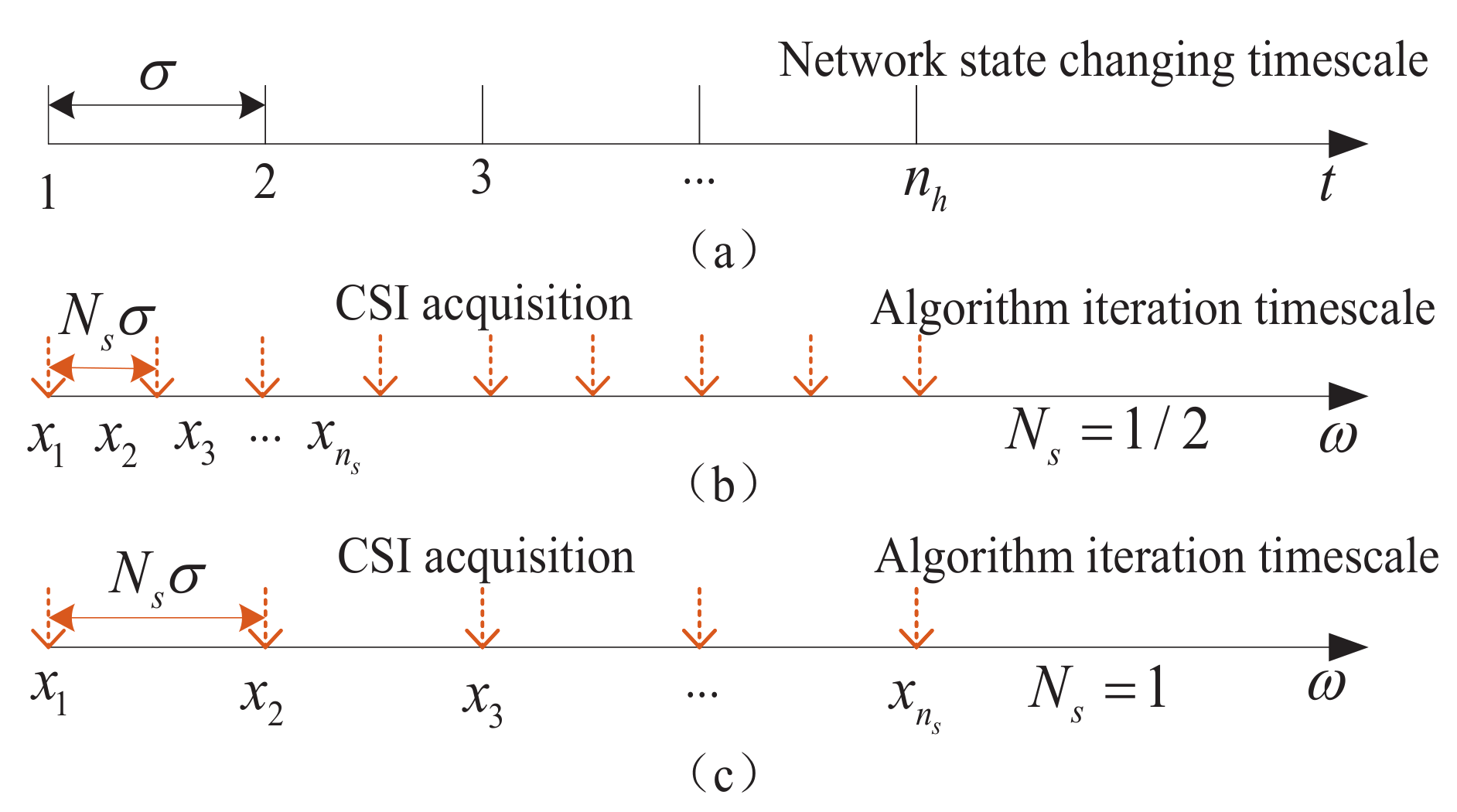
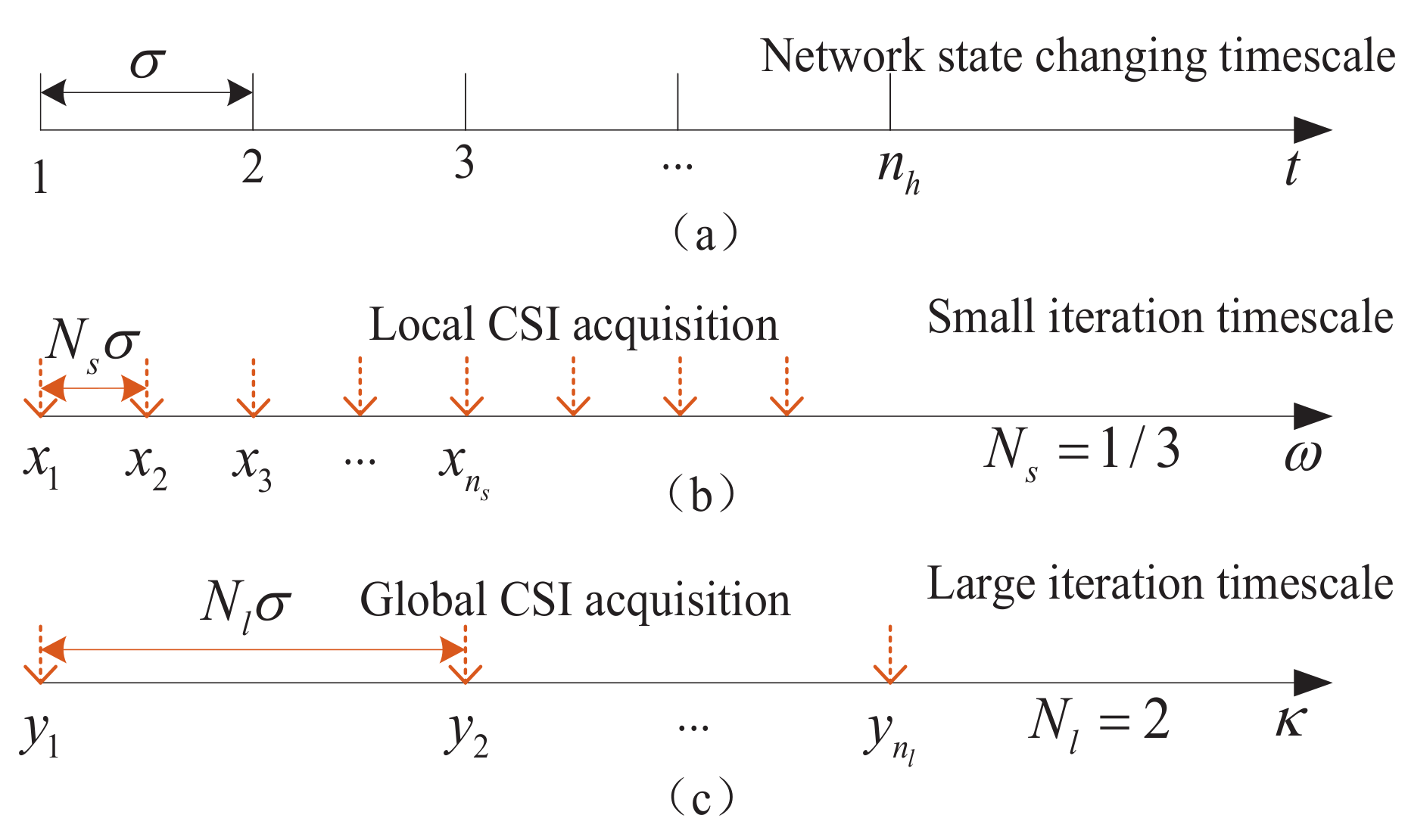
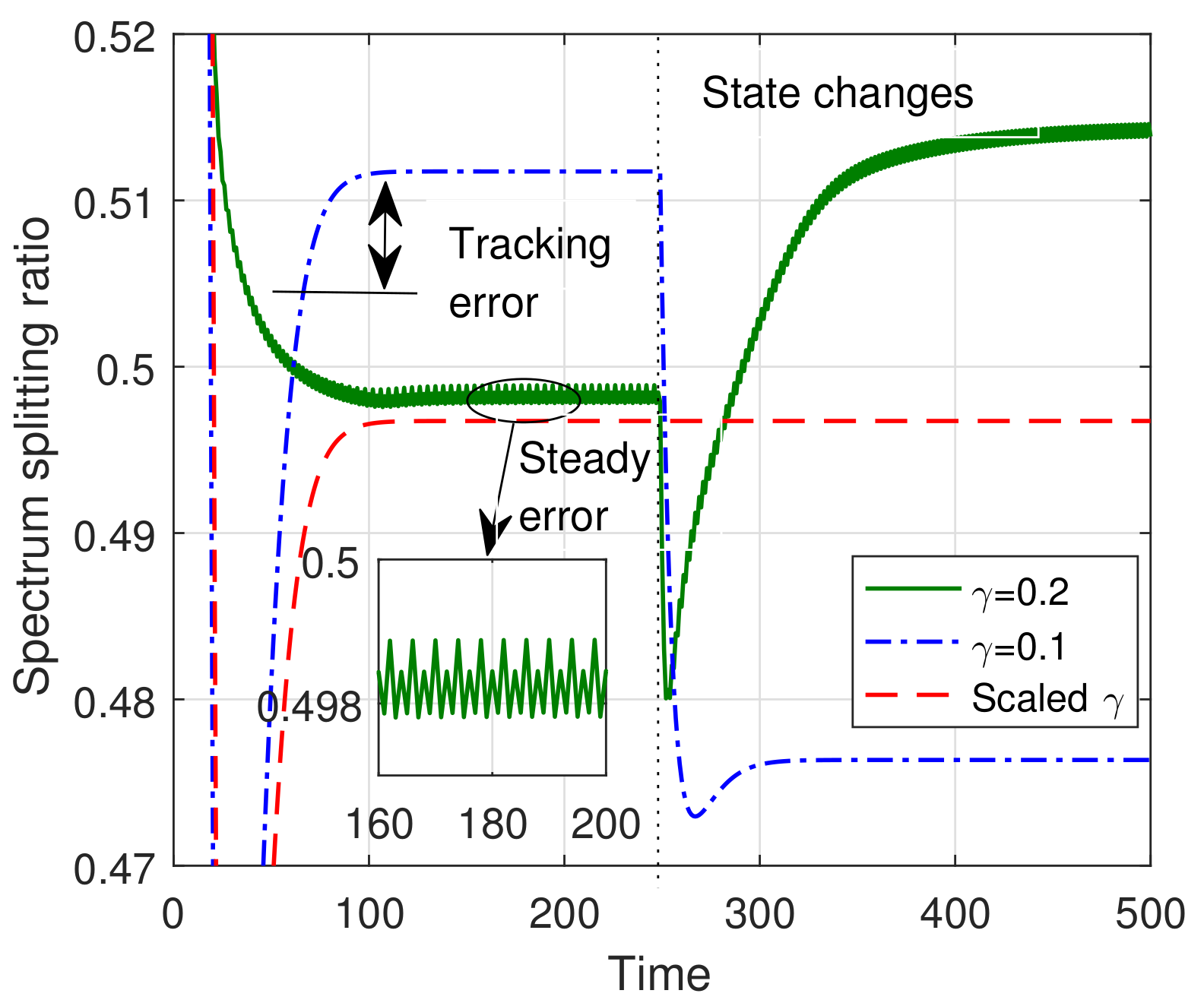
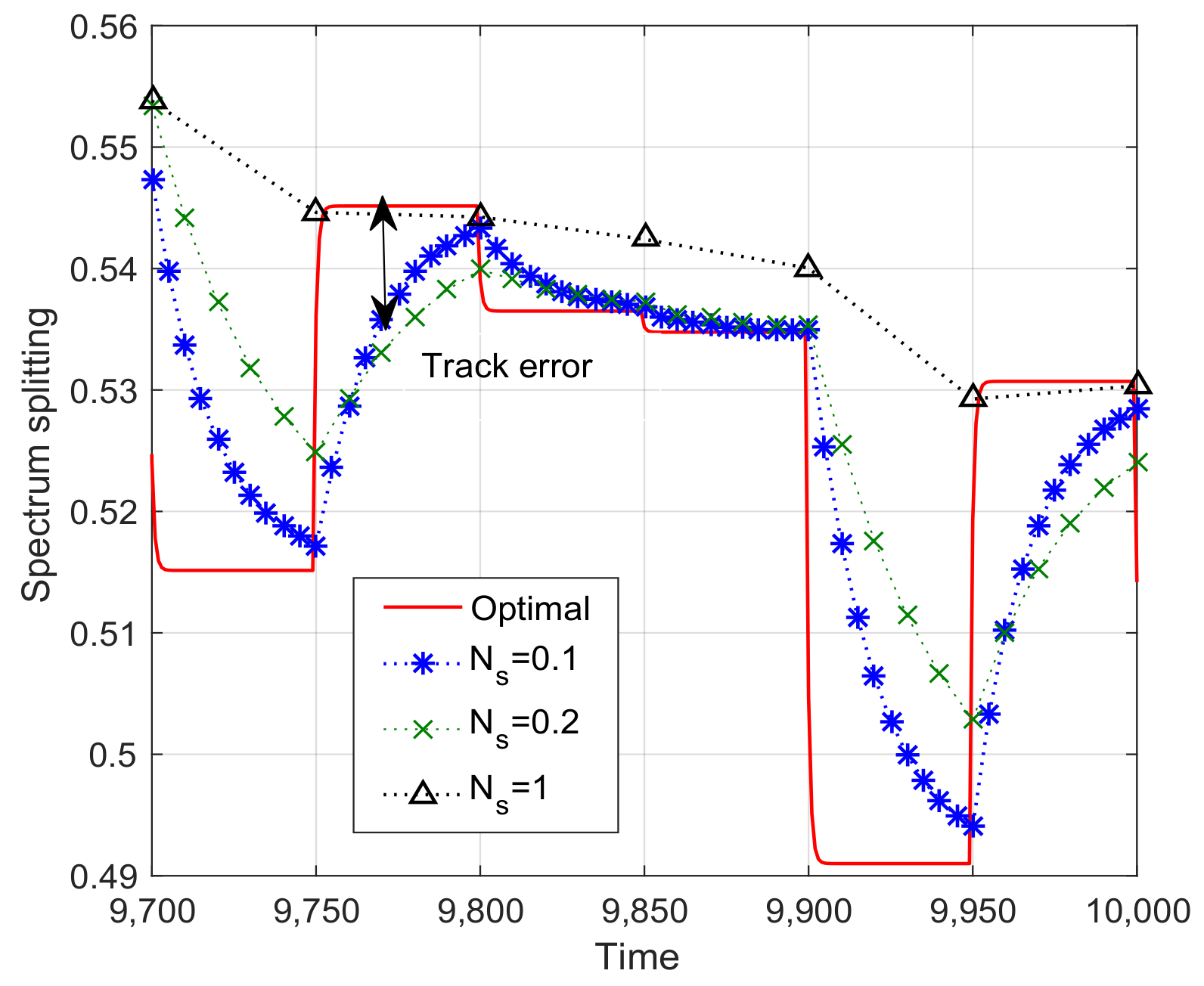

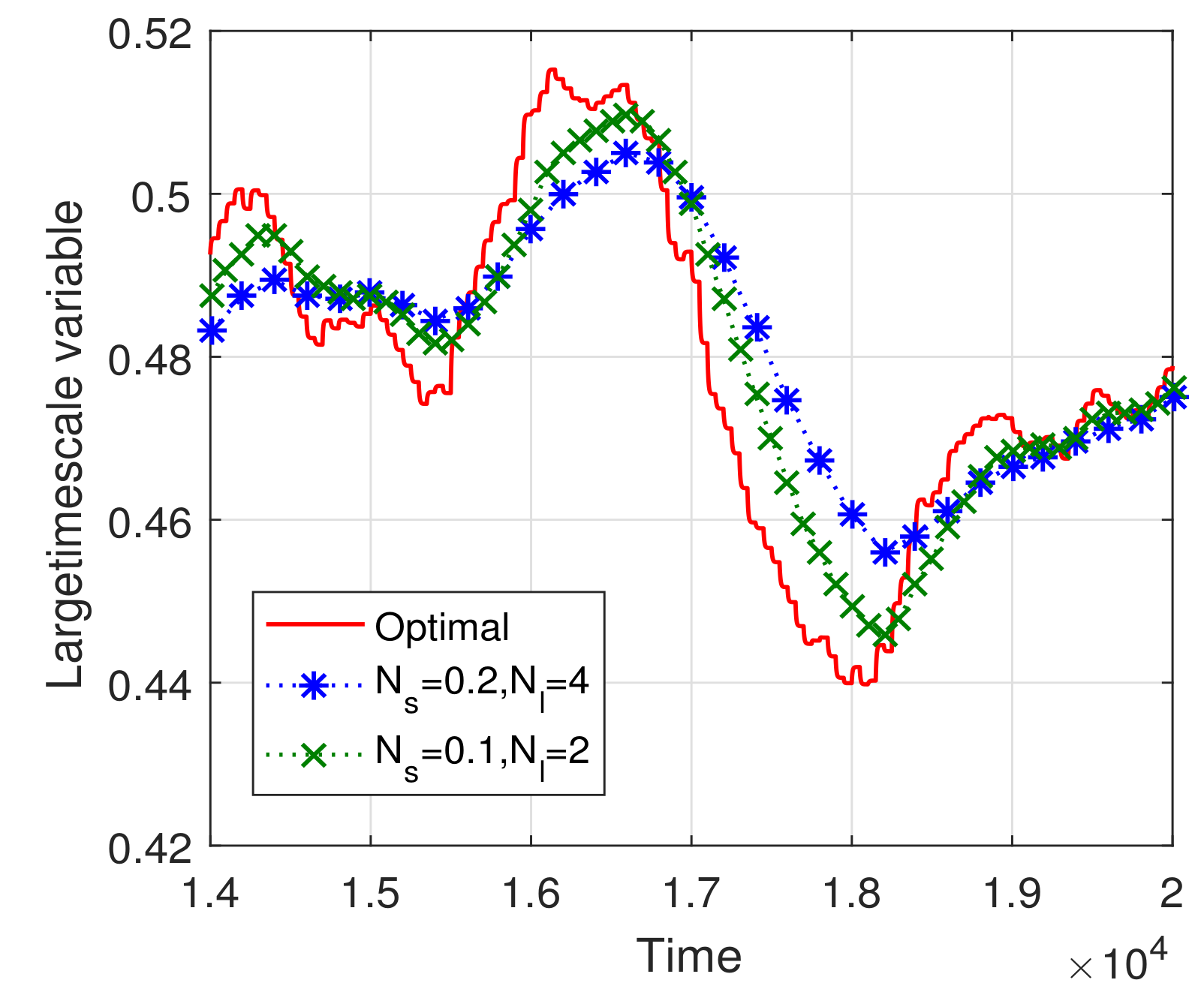

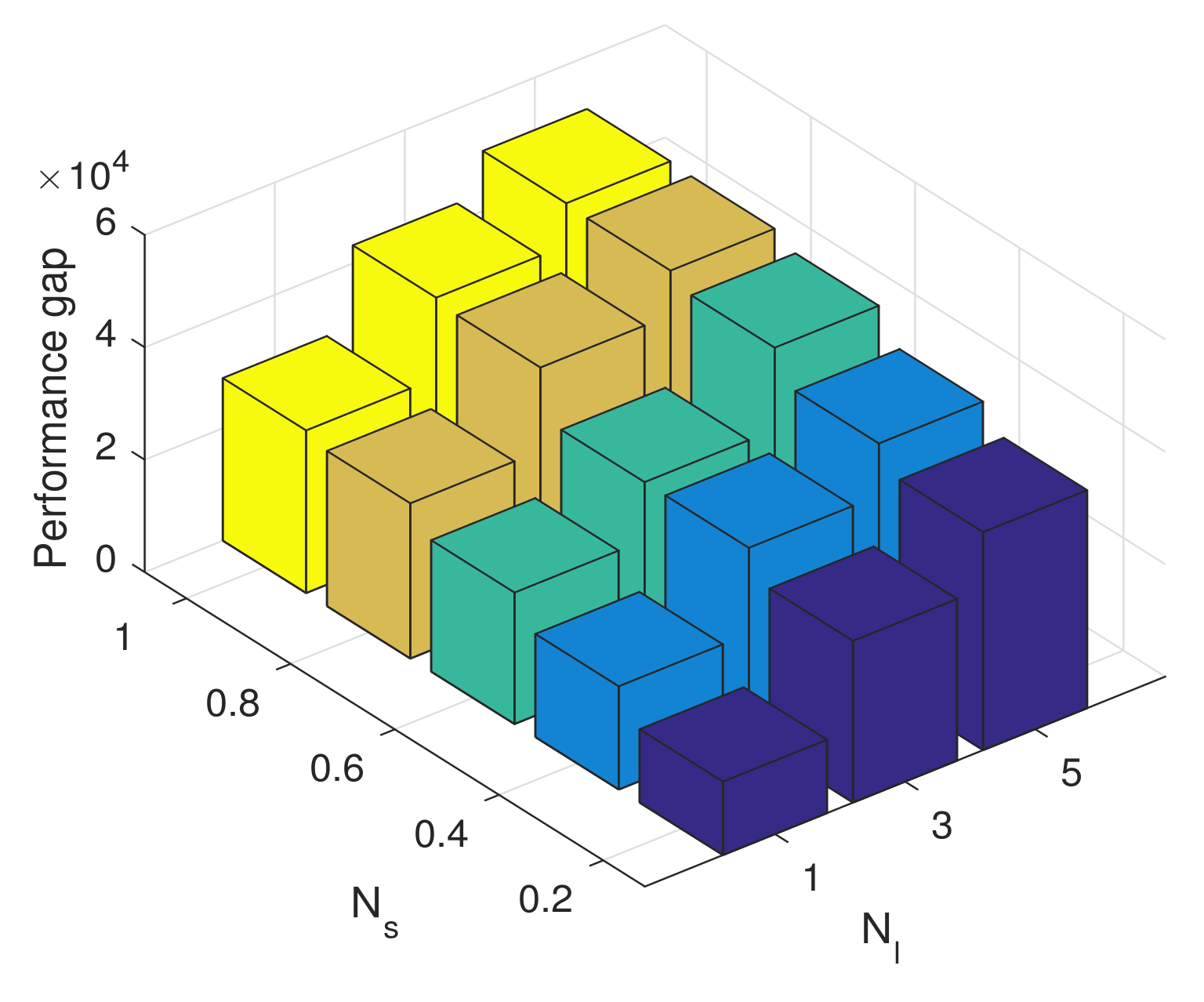


Disclaimer/Publisher’s Note: The statements, opinions and data contained in all publications are solely those of the individual author(s) and contributor(s) and not of MDPI and/or the editor(s). MDPI and/or the editor(s) disclaim responsibility for any injury to people or property resulting from any ideas, methods, instructions or products referred to in the content. |
© 2023 by the authors. Licensee MDPI, Basel, Switzerland. This article is an open access article distributed under the terms and conditions of the Creative Commons Attribution (CC BY) license (https://creativecommons.org/licenses/by/4.0/).
Share and Cite
Zhang, Y.; Wu, W.; He, W.; Zhao, N. Algorithm Design and Convergence Analysis for Coexistence of Cognitive Radio Networks in Unlicensed Spectrum. Sensors 2023, 23, 9705. https://doi.org/10.3390/s23249705
Zhang Y, Wu W, He W, Zhao N. Algorithm Design and Convergence Analysis for Coexistence of Cognitive Radio Networks in Unlicensed Spectrum. Sensors. 2023; 23(24):9705. https://doi.org/10.3390/s23249705
Chicago/Turabian StyleZhang, Yuan, Weihua Wu, Wei He, and Nan Zhao. 2023. "Algorithm Design and Convergence Analysis for Coexistence of Cognitive Radio Networks in Unlicensed Spectrum" Sensors 23, no. 24: 9705. https://doi.org/10.3390/s23249705
APA StyleZhang, Y., Wu, W., He, W., & Zhao, N. (2023). Algorithm Design and Convergence Analysis for Coexistence of Cognitive Radio Networks in Unlicensed Spectrum. Sensors, 23(24), 9705. https://doi.org/10.3390/s23249705





